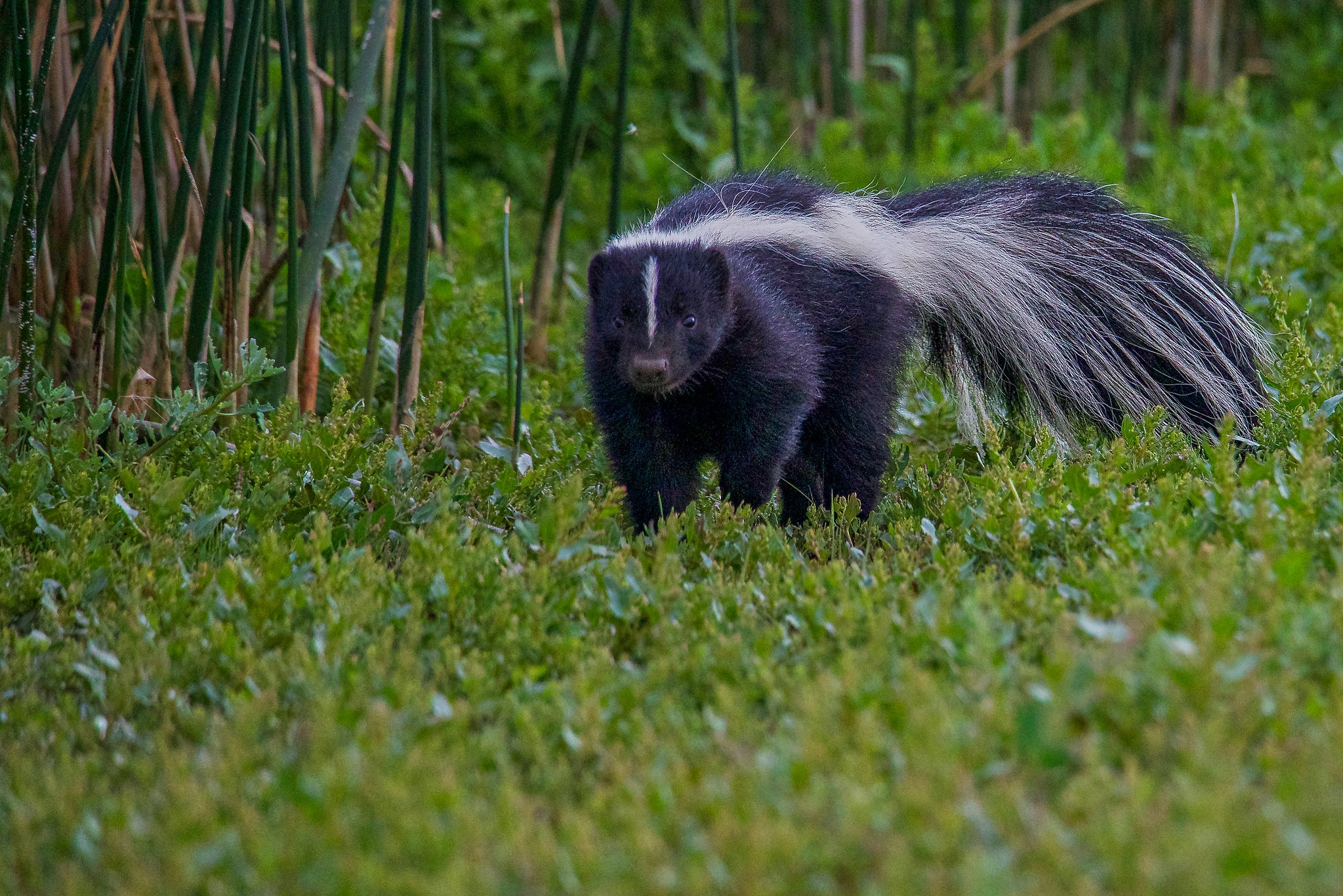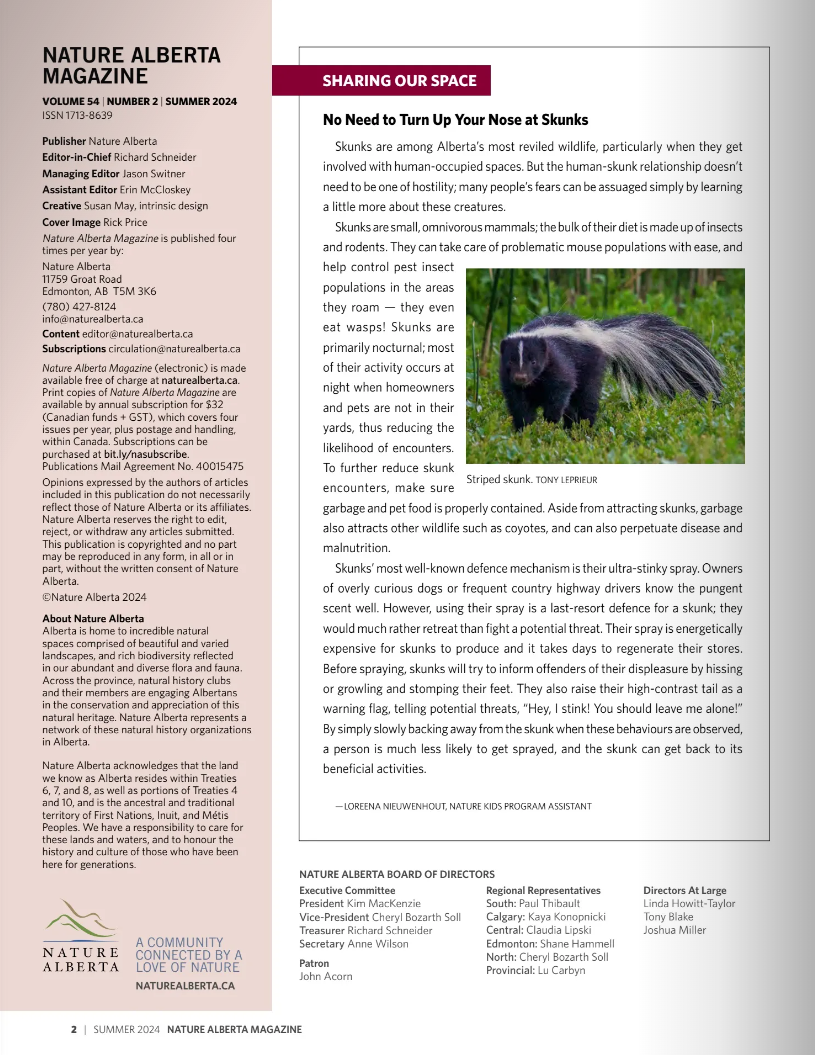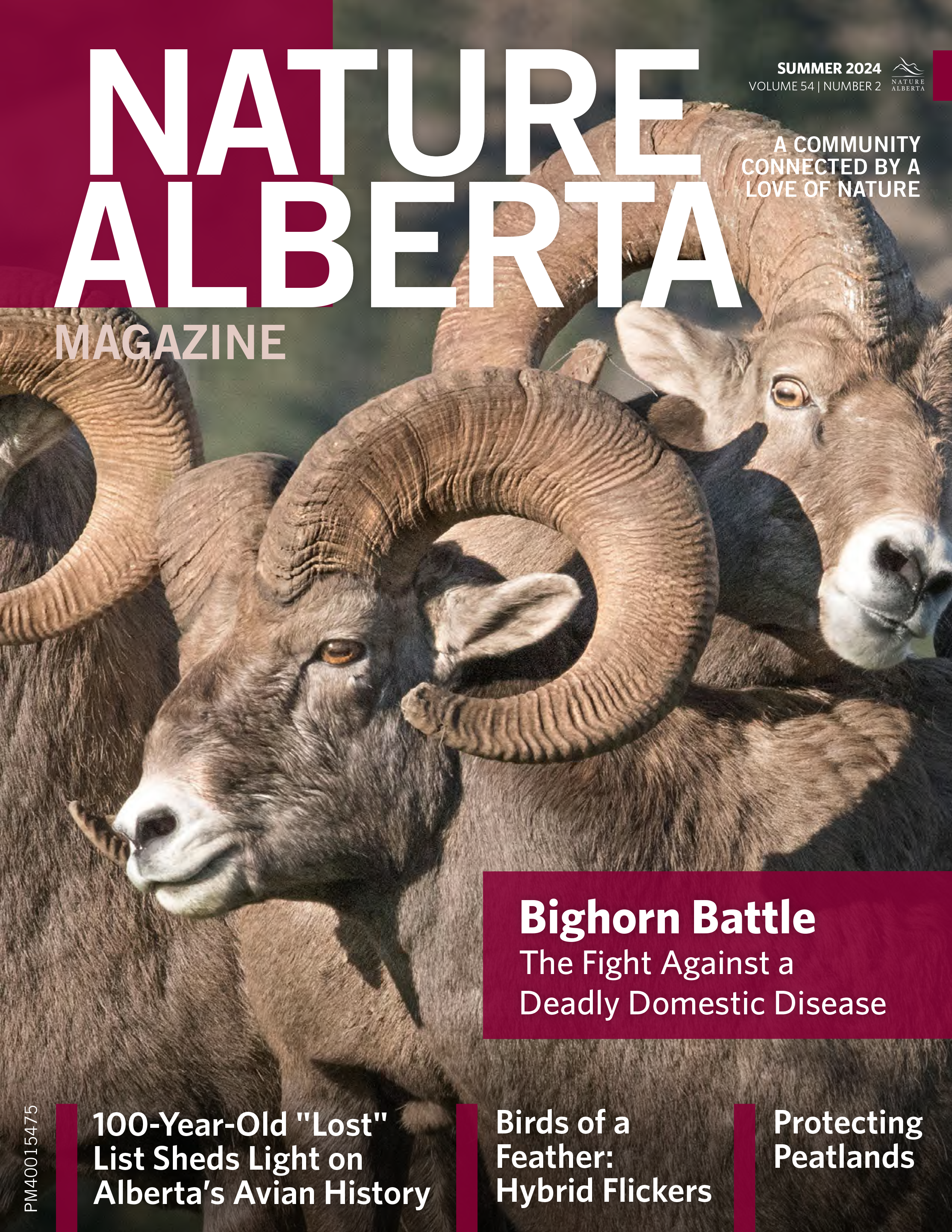Sharing Our Space: No Need to Turn Up Your Nose at Skunks
5 July 2024

BY LOREENA NIEUWENHOUT, NATURE KIDS PROGRAM ASSISTANT
Skunks are among Alberta’s most reviled wildlife, particularly when they get involved with human-occupied spaces. But the human-skunk relationship doesn’t need to be one of hostility; many people’s fears can be assuaged simply by learning a little more about these creatures.
Skunks are small, omnivorous mammals; the bulk of their diet is made up of insects and rodents. They can take care of problematic mouse populations with ease, and help control pest insect populations in the areas they roam — they even eat wasps! Skunks are primarily nocturnal; most of their activity occurs at night when homeowners and pets are not in their yards, thus reducing the likelihood of encounters. To further reduce skunk encounters, make sure garbage and pet food is properly contained. Aside from attracting skunks, garbage also attracts other wildlife such as coyotes, and can also perpetuate disease and malnutrition.
Skunks’ most well-known defence mechanism is their ultra-stinky spray. Owners of overly curious dogs or frequent country highway drivers know the pungent scent well. However, using their spray is a last-resort defence for a skunk; they would much rather retreat than fight a potential threat. Their spray is energetically expensive for skunks to produce and it takes days to regenerate their stores. Before spraying, skunks will try to inform offenders of their displeasure by hissing or growling and stomping their feet. They also raise their high-contrast tail as a warning flag, telling potential threats, “Hey, I stink! You should leave me alone!” By simply slowly backing away from the skunk when these behaviours are observed, a person is much less likely to get sprayed, and the skunk can get back to its beneficial activities.
Read the Original Article for this Post
For a richer reading experience, view this article in the professionally designed online magazine with all images and graphs in place.
This article originally ran in the Summer 2024 issue of Nature Alberta Magazine (Vol. 54 | No. 2).


